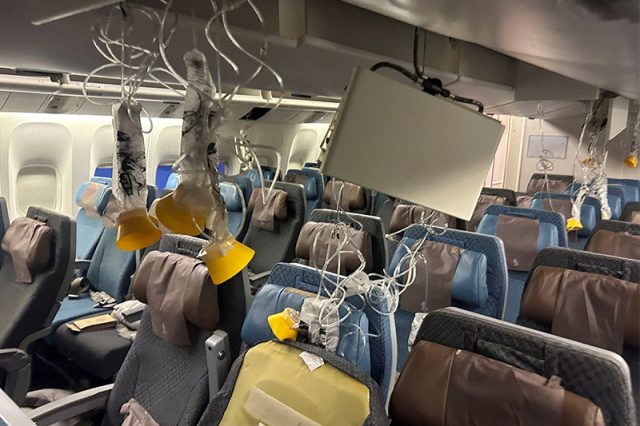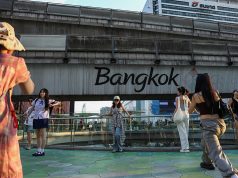
CHICAGO — Buckle up. That is the message from flight attendants and pilots following the severe turbulence encountered by a Singapore Airlines SIAL.SI flight on Tuesday that resulted in the death of one and injured dozens of others.
The London-to-Singapore flight hit heavy turbulence over the Indian Ocean and descended 6,000 feet (around 1,800 meters) in about three minutes, before an emergency landing in Bangkok.
READ: Shaken passengers arrive in Singapore after turbulence-hit flight | Singapore Airlines flight makes emergency landing in Bangkok, one dead, 30 injuries reported
Singapore Airlines did not say what type of turbulence was involved, but aviation experts suspect it to be clear-air turbulence, considered to be the most dangerous type of turbulence.
Clear-air turbulence (CAT) is virtually undetectable with current technology, meaning it can hit without warning – making it all the more important for passengers on a plane to wear seatbelts whenever seated, safety experts said.
Airlines are required by law to switch on the seatbelt sign during takeoff and landing of flights, but carriers have their own procedures to deal with mid-air turbulence.
A witness on the Singapore Airlines flight said numerous people who were not in their seatbelt were thrown around the cabin when the plane dipped, with many hitting their heads.
Sara Nelson, international president of the Association of Flight Attendants-CWA representing over 50,000 at 20 airlines, said CAT instances are on the rise and cannot be seen, stressing the importance of being buckled during flight.
“It is a matter of life and death,” Nelson said.
Turbulence-related airline accidents are the most common type of accident, a 2021 study by the U.S. National Transportation Safety Board said.
Most recently, in March, a Boeing BA.N 787 plane operated by LATAM Airlines LTM.SN dropped abruptly mid-flight, causing injuries to more than 50 people.
Aerospace safety expert Anthony Brickhouse said passengers need to minimize their movement on flights and always stay buckled in, regardless of the seatbelt light.
American Airlines AAL.O requires its pilots to turn the seatbelt sign on and instruct passengers and flight attendants to sit immediately when turbulence is severe.
Flight attendants then have to remain seated until notified by the flight’s captain or the seatbelt sign is turned off. Other airlines have similar protocols.
Some pilots and attendances say that leaving a seatbelt sign on throughout the flight would backfire – as passengers would start to ignore it.
“The seatbelt sign means something, and if you leave it on all the time, it means nothing,” said Dennis Tajer, a spokesperson for the Allied Pilots Association, American Airlines pilot union. “Everyone will just say it’s a sign that doesn’t mean anything.”
RELATED: Injured passengers on Singapore Airlines face varied compensation
— Reporting by Rajesh Kumar Singh, Additional reporting by Allison Lampert; Editing by Marguerita Choy









